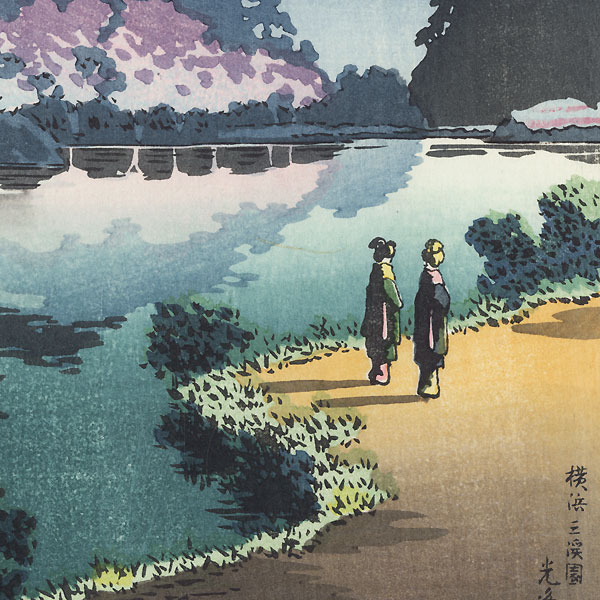The Yokohama Port Opening Festival Parade 1936
By Andrew Warland (Melbourne, Australia), with Shinya Ota (Yokohama, Japan).
The following set of photographs are believed to have been taken by the then British Consul-General (possibly E Hamilton Holmes or his successor Reginald Austin) at the Yokohama Port Opening festival parade held in May 1936. The original negatives were found by my father among various discarded items at the British Consulate, Yokohama, when he was assigned to guard duty there (from the Australian ship HMAS Hobart) in December 1945. The negatives were not uncovered again until 2021.
I am indebted to and very grateful for the amazing degree of help and assistance I received from local Yokohama resident Shinya Ota for his help with identifying details in these photos (and other photos of the Consul-General's family). Shinya blogs at Weekend Walks in Yokohama.
The roll of negatives starts with three photographs of a group of Japanese (possibly the Consul-General's staff), one older western woman (at the rear), and a younger western girl (at the front left). They may have been watching the parade from that vantage point. The photographer then moved to the corner of Basamichi and Onoe streets for the next photos.
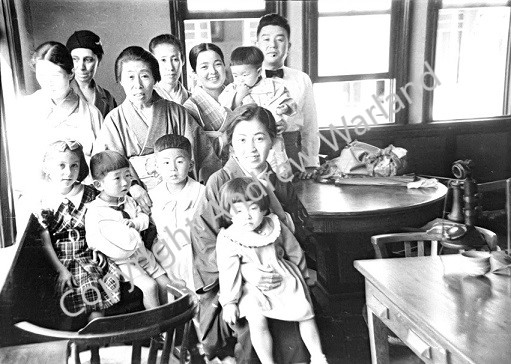
The map below was provided by Shinya Ota and shows the main location (with the red circle) where most of the photographs below were taken.
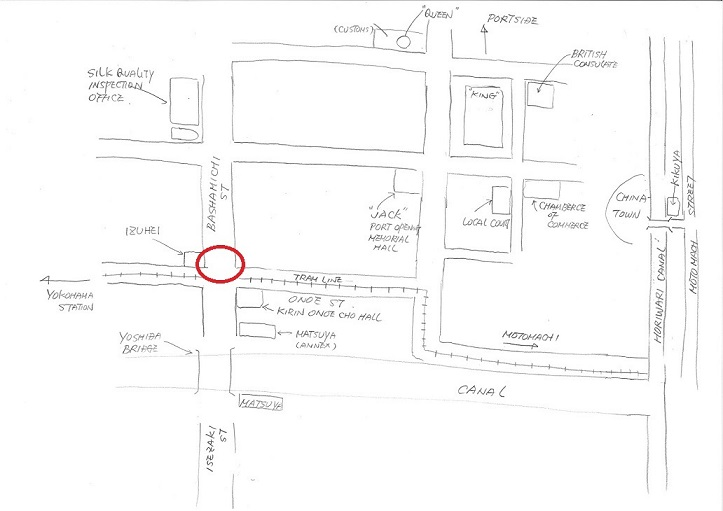
A group of musicians in a musical band station, playing traditional festival music.
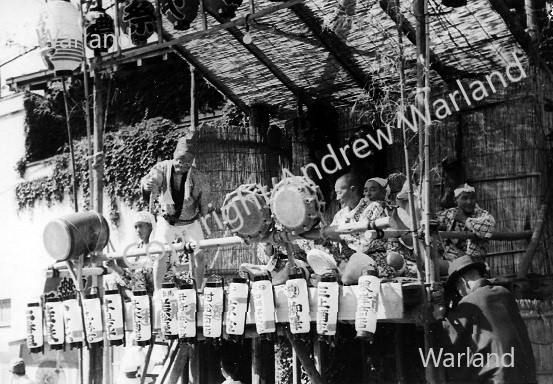
A young man standing in front of Izuhei, a sushi restaurant that has operated since 1839 (and to the present day) at 5-62 Onoe cho, Naka Ward, Yokohama.
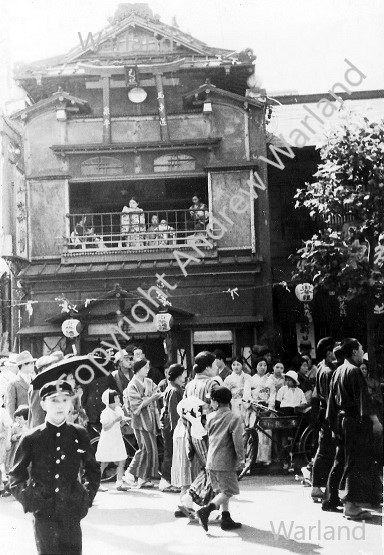
Izuhei restaurant in 2021 (Google street view).
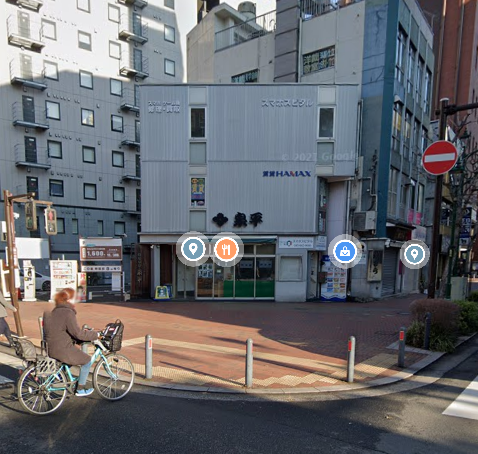
The performers in this and subsequent photos are dressed in the style of 'Daimyo Gyoretsu', a procession that was originally a form of military traffic preparing for battle during the Edo period when the feudal lord (the 'daimyo'). As peace in Edo lasted so long, the parade became a way to show off authority and social status. The following text from the link in the previous paragraph, helps to explain the types of characters seen in this parade: 'Attendants consisted of warriors, horse-riding or on foot, ashigaru (common foot soldiers) carrying matchlock gun or bow (arm), chugen (a rank below common soldier) or ninsoku carrying tool box or spear, and people who took care of daimyo such as zoritori (sandal bearer, equivalent to a batman) and doctors.'
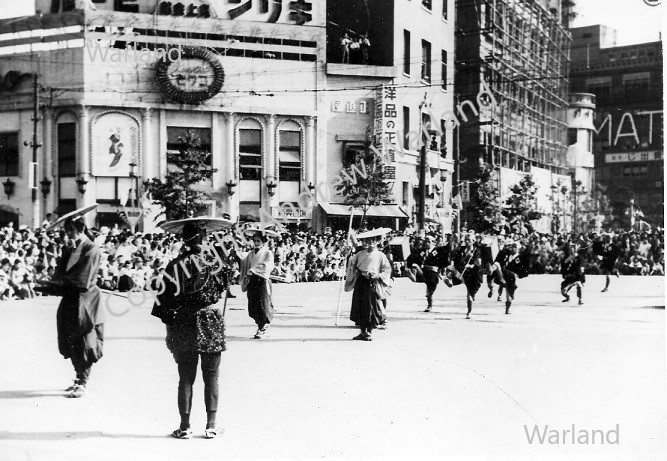
The building on the corner has the words 'Onoecho Kaikan' (Onoecho Hall) along the top and also the words 'Kirin Beer' which was founded in Yokohama in 1869 by Norwegian-American brewer, William Copeland. In the distant background can be seen the letters 'MAT' on what is probably the annex for the main building of the department store 'Matuya' which was located on the canal bank. The actual registered name for this department store in English is 'Matsuya'. The main building was used as a hospital during WW2 by the Japanese Army, and then the US Army after 1945.
Present day Google street view showing the same location above in 2021. The photographer was standing on the corner where the Izuhei sushi restaurant is located.
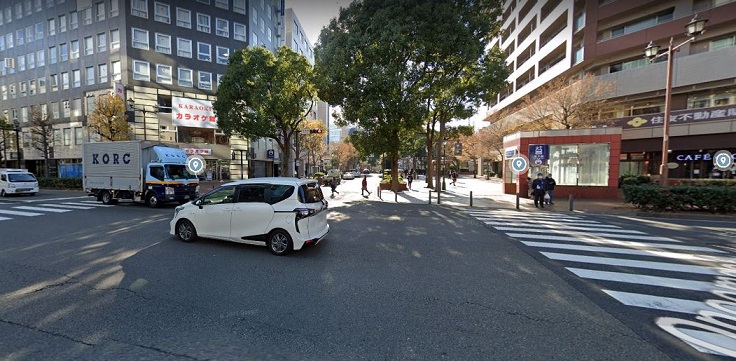
At least one of the buildings in the centre of the photograph has a Japanese imperial 'rising sun' flag.
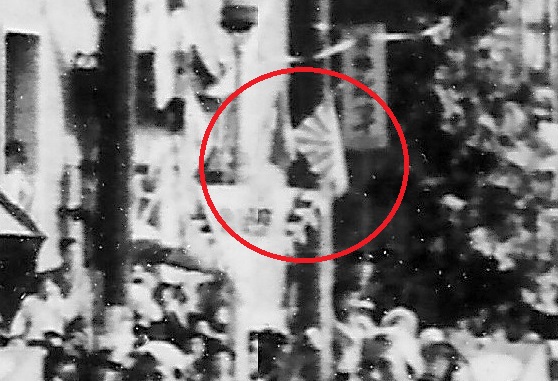
The 'Daimyo Gyoretsu' procession of performers.
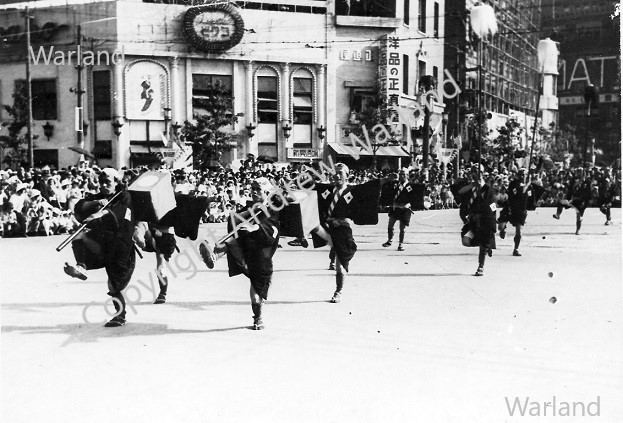
The 'Daimyo Gyoretsu', with a procession of Samurai guards.
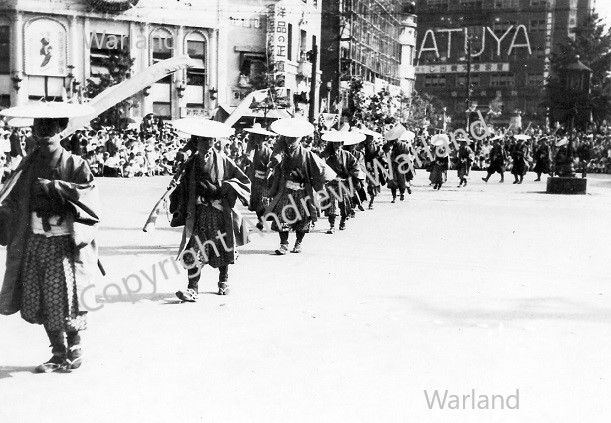
The 'Daimyo Gyoretsu', with a procession of high ranking officials carrying (or in) the kago (palanquin). According to this site, 'During the Edo period, there was a Buddhist temple attached to a shrine next to Myoken Shrine and it appears that the high priest rode in a kago, or palanquin, to take part in the procession.'.
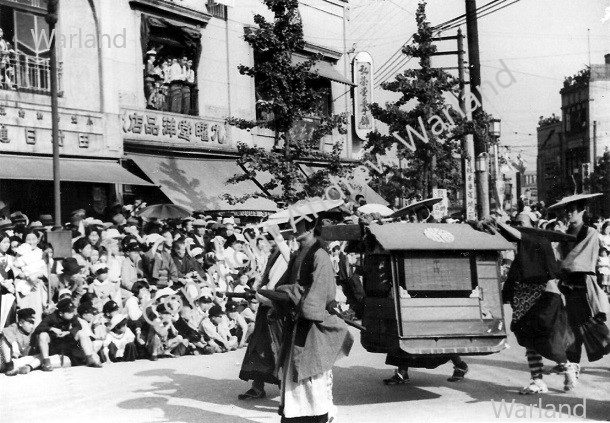
The 'Daimyo Gyoretsu', showing the koshimoto, or female staff.
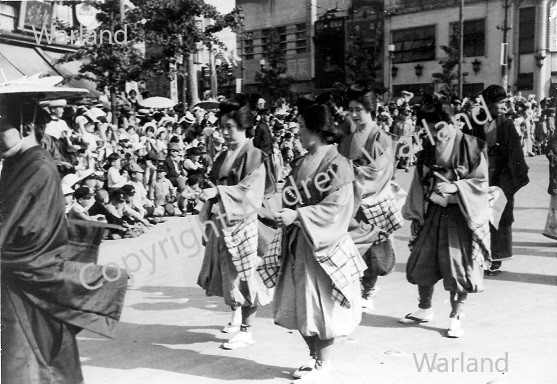
The 'Daimyo Gyoretsu', with a procession of performers.
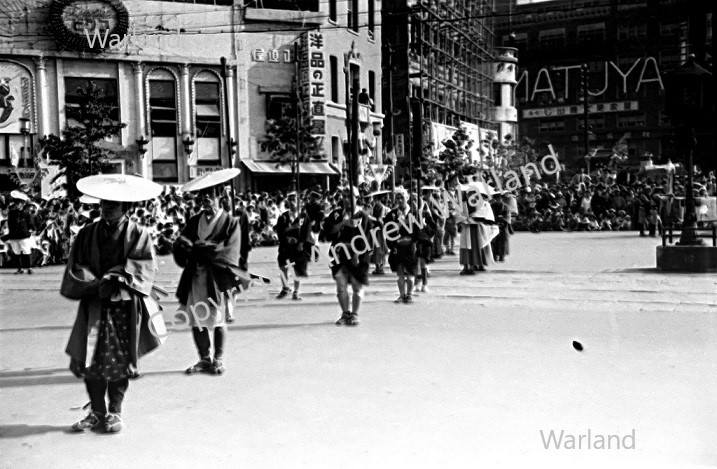
More performers and guards.
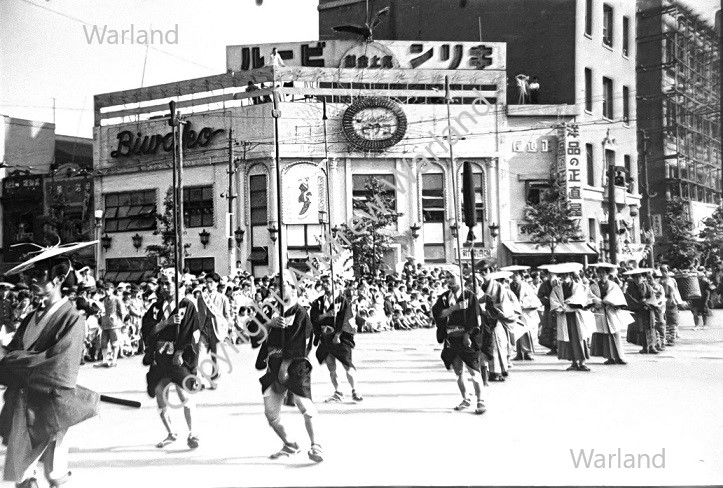
The people here are porters transporting parcels.
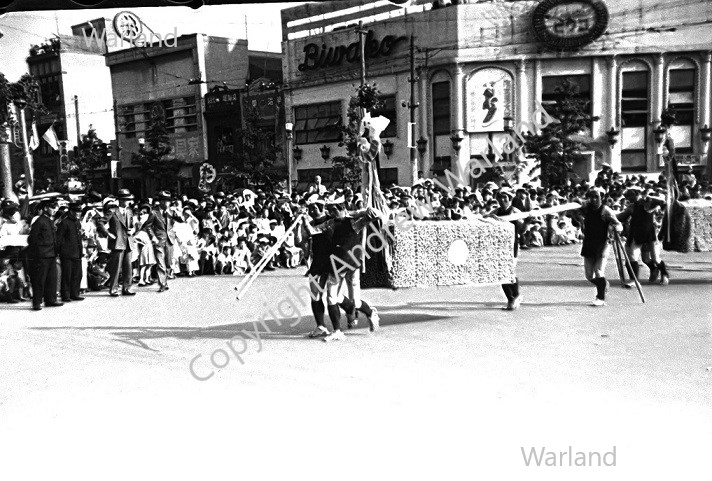
The float below represents the 'kurofune' or black ship from Commodore Matthew C.Perry’s US naval fleet that first arrived in 1854. Black ship floats are always seen in the port opening memorial parades, as the fleet's arrival was directly linked with the opening of the port to foreigners.
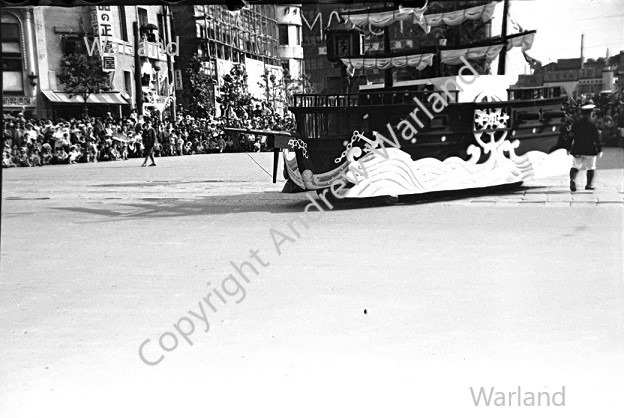
A Japanese print from 1854 showing the 'black' ships of Commodore Perry's fleet.
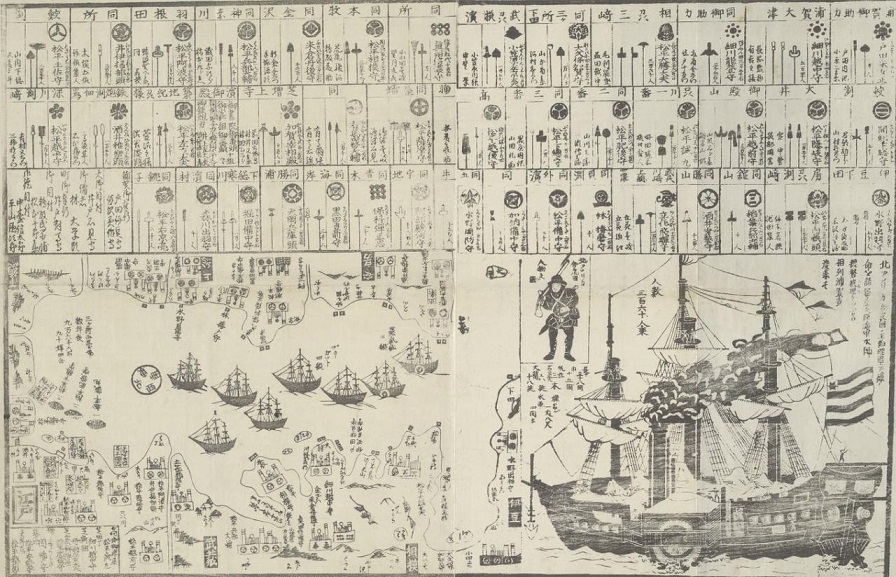
Another photo of the black ships float.
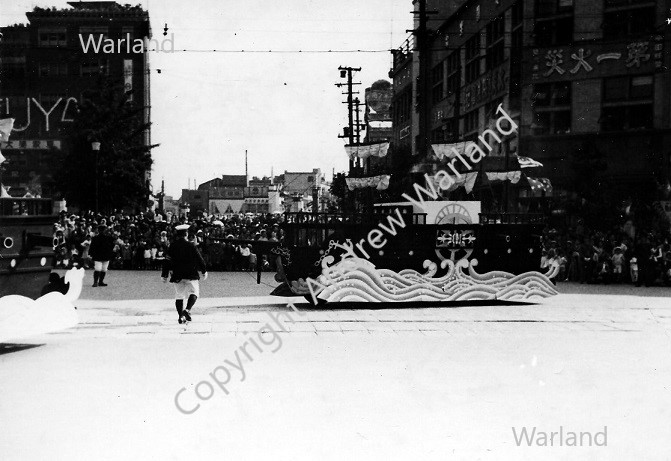
This group is dressed as Shinto priests.
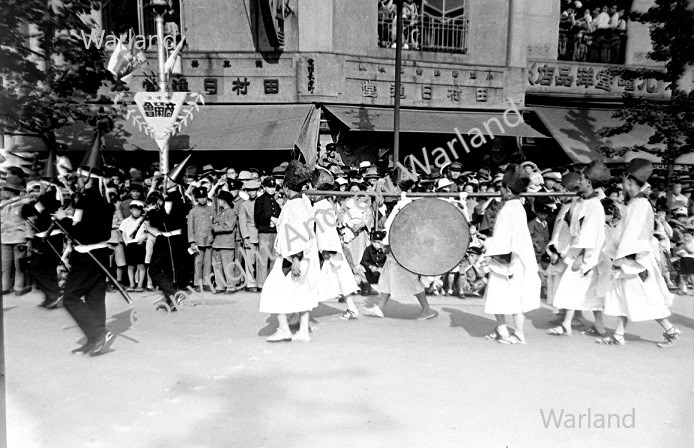
This group is dressed as Samurai from the civil war, around 1860. The crest on the banner on the left is the Tokugawa clan.
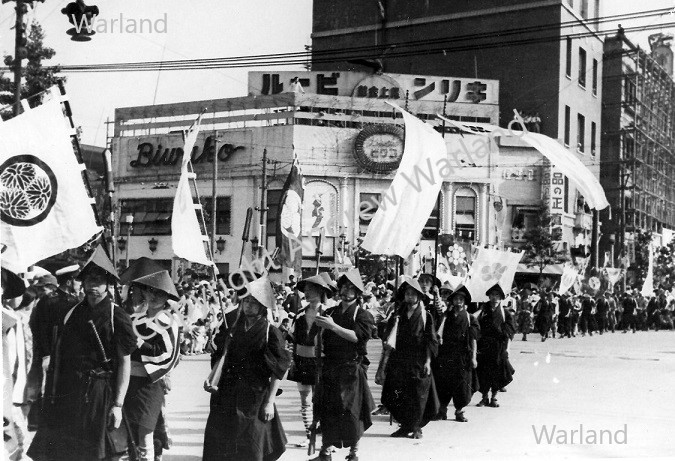
More 'Daimyo Gyoretsu' performers. The banner on the left has the word 'Yokohama' on it in Japanese.
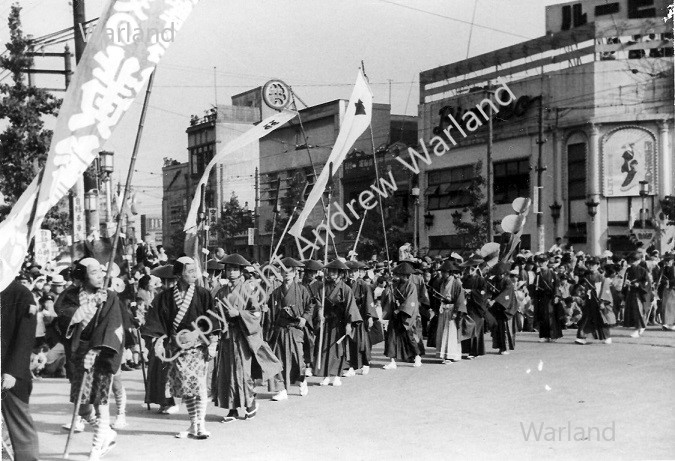
A group dressed as Matthew C.Perry, his staff and sailors. A tram can be seen in the background
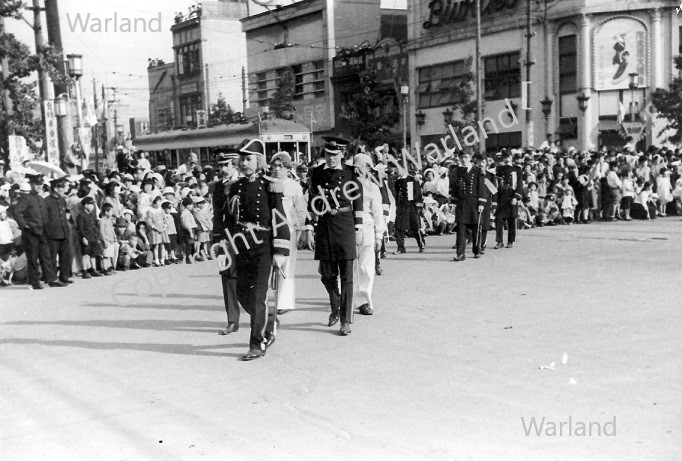
A group dressed as foreigners.
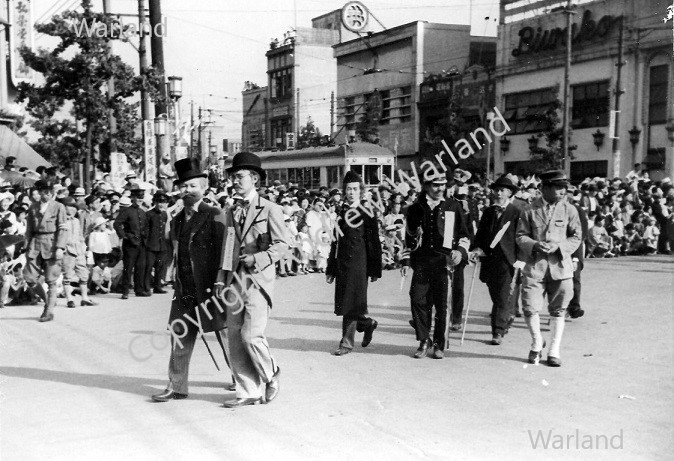
A group dressed as Samurai during the civil war.
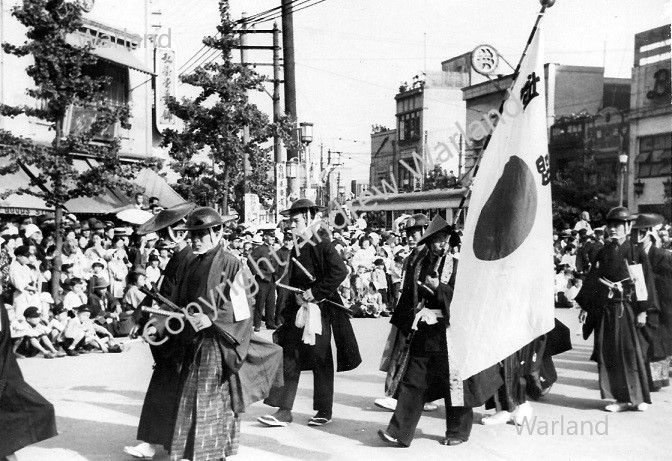
Men dressed as high ranking Samurai on horseback. In the background can be seen Kikuya Bakery and Bunzyudo on Basamachi. The Kikuya bakery shop later moved to Motomachi.
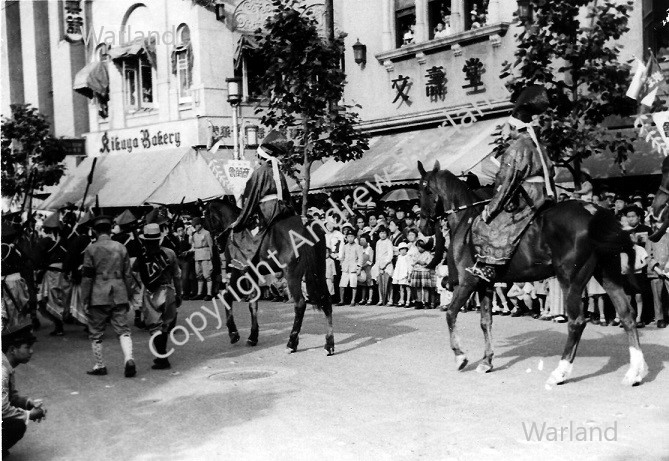
A group representing Matthew C.Perry‘s American sailors and its music band.
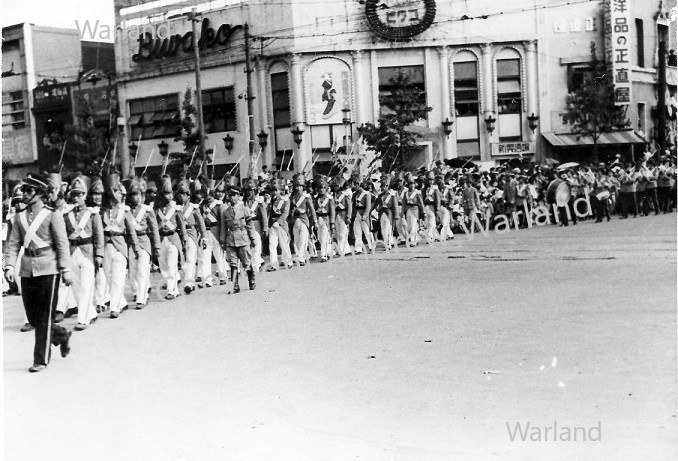
A continuation of the group representing Matthew C.Perry‘s American sailors and its music band. For the next photo, the photographer moved back on the corner of the intersection where Izuhei restaurant is located, providing a view in the distance.
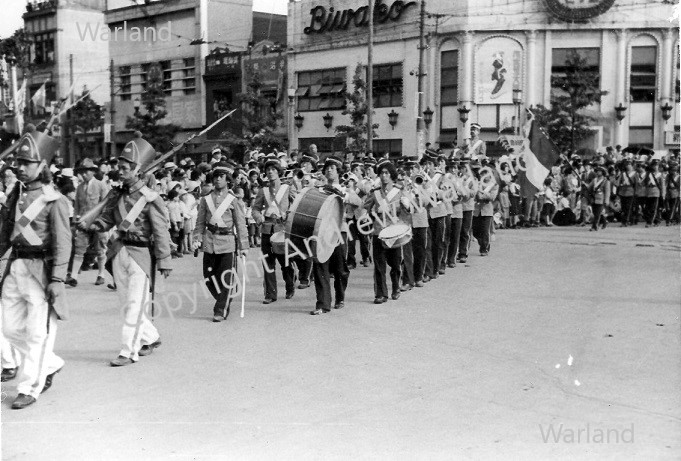
A group in a horse-drawn wagon who are either dressed as westerners or are actually westerners (perhaps Dutch, by the flag). Bashamichi Street was built for western style horse-drawn carriages.
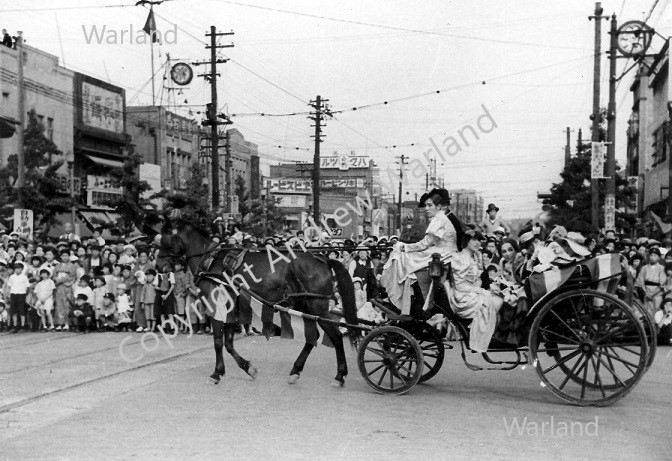
Present day Google street view showing the same location above in 2021, looking down Onoemachi-dori Street.
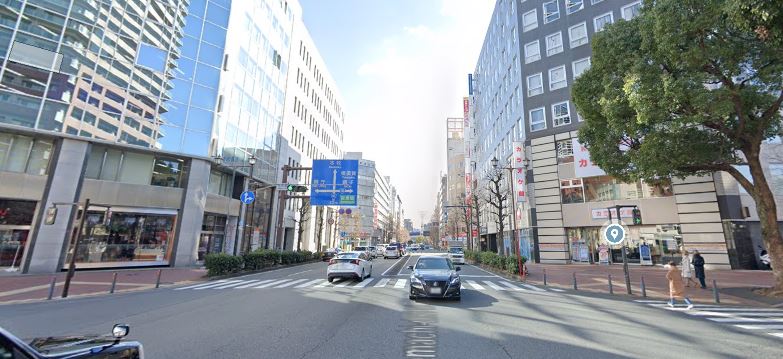
Similar to the previous photograph, except that this carriage has American flags. It is not known if these are actually Americans or are dressed as foreigners. The photographer appears to have moved back to the other side of the road
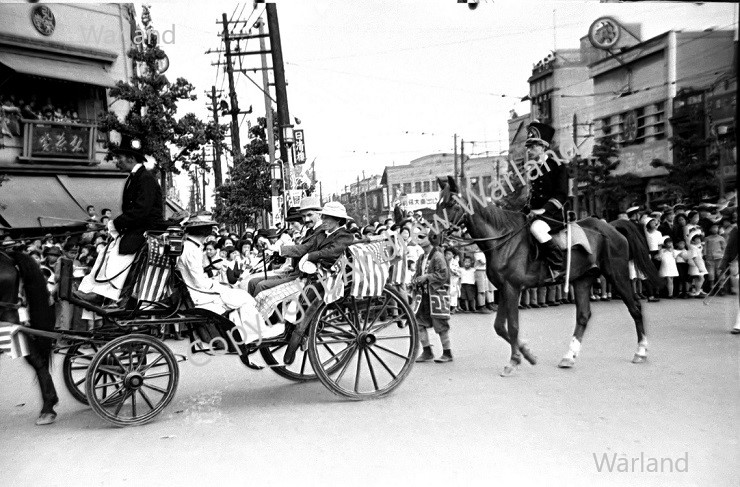
A closer view of the people in the 'American' carriage.
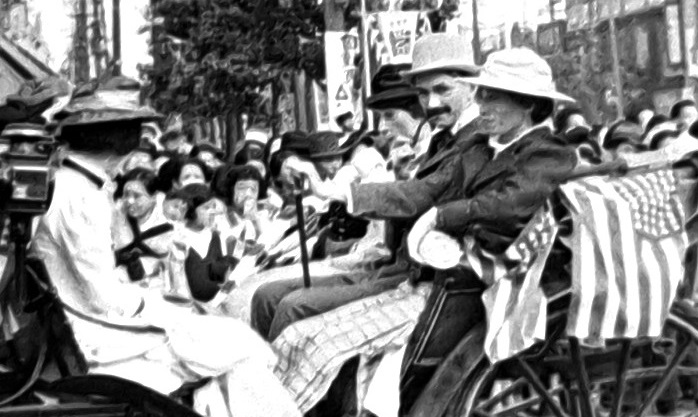
More performers in the 'Daimyo Gyoretsu'. It is not clear where this photograph was taken from but it does not appear to be on the same intersection as before.
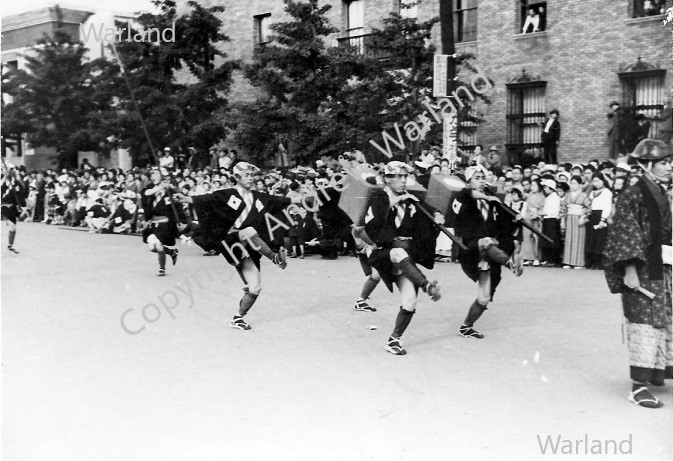
More of the 'Daimyo Gyoretsu' performers.
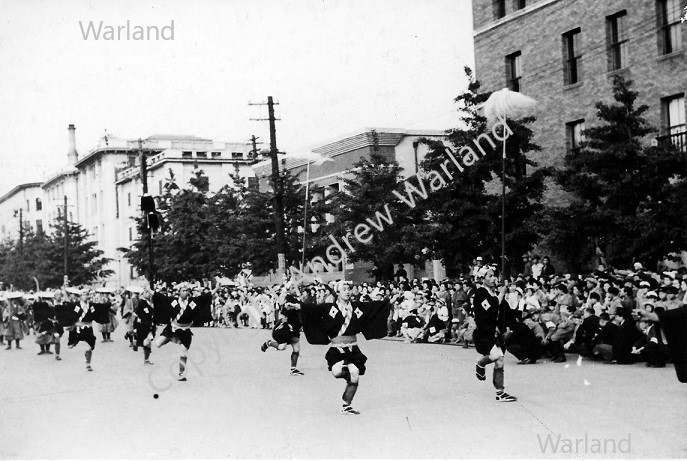
A group representing high-ranking Samurai in the 'Daimyo Gyoretsu'.
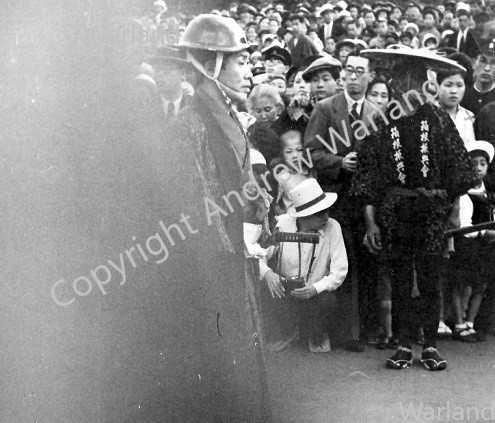
A group dressed as Samurai from the civil war, around 1860. The photographer appears to be walking further away now, in the background can be seen what appears to be a park or open area.
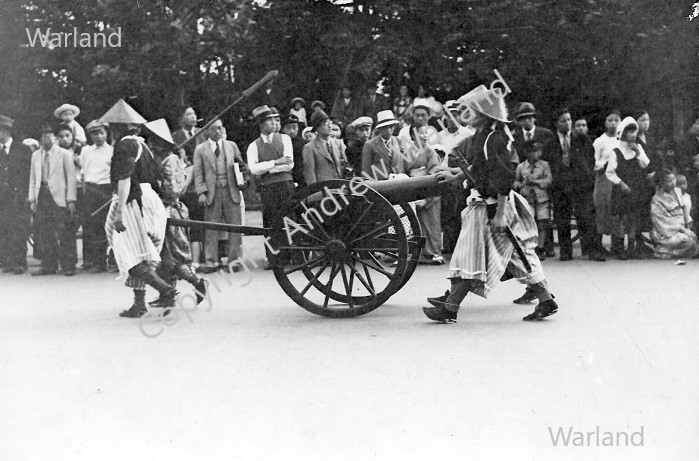
A high-ranking Samurai of the rebellion wearing bear’s fur seen during the civil war around 1860.
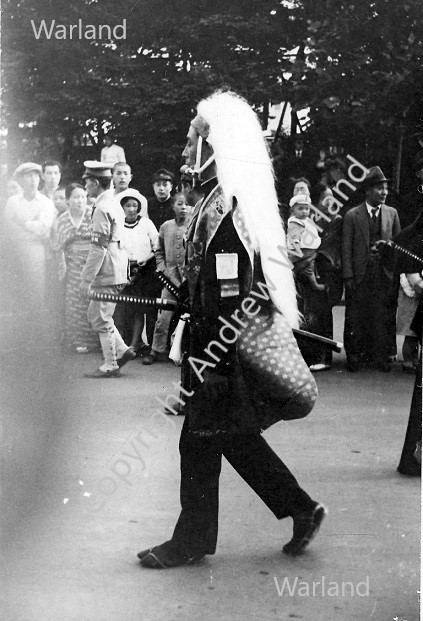
A group representing the Emperor's staff.
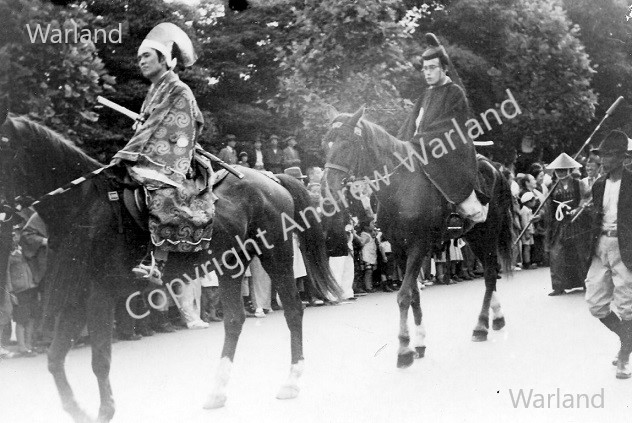
One of the last floats in the parade. This photograph appears to have been taken from across an open area looking towards the end of the parade.
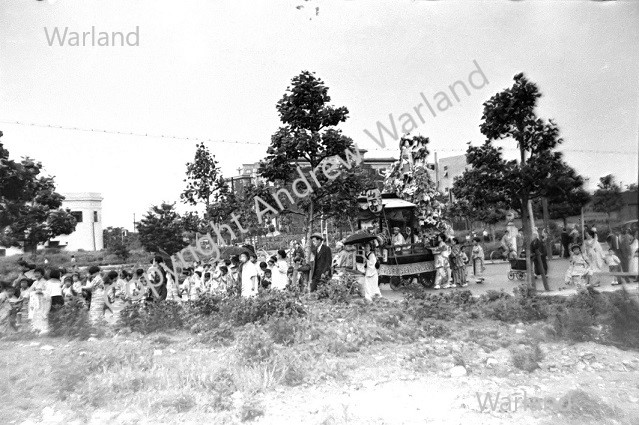
A float in the parade, bearing the name 'Yamashita', which is a nearby area.
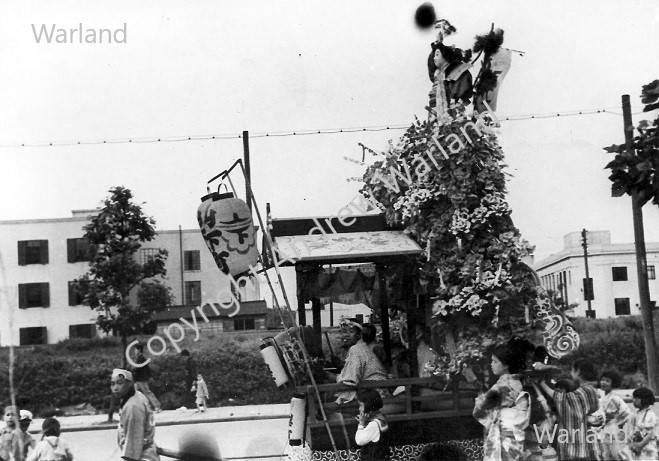
These parades resumed only in 1953 and are held in May every year to commemorate the port opening. For more information, see this site (Japanese language)
